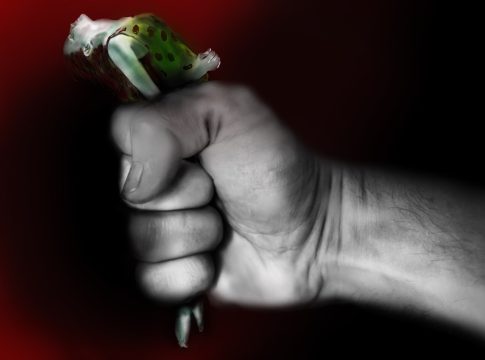Domestic violence is a pressing issue that affects millions of people across various demographics, yet it often goes unnoticed until it escalates into a severe situation. Understanding the subtle warning signs of domestic violence can empower individuals to recognize toxic relationships, potentially saving lives. Whether it’s a friend, family member, or even oneself, knowing these red flags is vital in fostering safe spaces for everyone. Let’s delve into the seven warning signs that might indicate the presence of domestic violence.
1. Intense Jealousy
Jealousy is often portrayed as a sign of love, but when it becomes overwhelming, it can be a major red flag. If your partner frequently accuses you of infidelity, gets upset when you spend time with friends, or tries to monitor your movements, it could signify deeper control issues. This behavior might start subtly but can escalate quickly. Maintaining healthy independence is essential in any relationship, so pay attention to these feelings of possessiveness.
2. Verbal Abuse
Words can cut deeper than any physical blow, and verbal abuse is a significant warning sign of domestic violence. If you notice your partner consistently belittling you, including name-calling, blaming you for their problems, or making you feel worthless, these are clear signs of an unhealthy dynamic. Verbal abuse often serves to instill fear and low self-esteem, keeping the victim emotionally trapped. Healthy communication should uplift rather than diminish.
3. Isolation from Friends and Family
A partner who tries to isolate you from your support system is exhibiting controlling behavior often associated with domestic violence. This may include discouraging you from spending time with friends and family or limiting your ability to reach out to those you trust. Isolation is a tactic to remove your support network, making it easier for the abuser to control you. Stay alert to your relationships with others; they are crucial for your emotional well-being.
4. Mood Swings
If your partner exhibits extreme mood swings that leave you walking on eggshells, this may be a sign of emotional volatility linked to domestic violence. One moment they could be affectionate and loving, and the next, they might explode in anger over trivial matters. This unpredictability creates an environment of fear and stress, making it hard for you to feel safe. Healthy relationships are stable and nurturing, not tempestuous and frightening.
5. Control Over Finances
Financial abuse is often overlooked but is a significant component of domestic violence. If your partner closely monitors your spending, controls how much money you can have, or even prevents you from working, these behaviors are alarming. Financial independence is a crucial aspect of personal freedom, and when one partner exerts control over finances, it reinforces their power. Open discussions about finances can help ensure transparency in a healthy relationship.
6. Physical Aggression
Perhaps the most obvious sign of domestic violence is physical aggression. This can range from subtle gestures like throwing objects near you to more severe actions like hitting or pushing. If you feel scared of your partner when they are angry or if they have ever laid hands on you, take these signs seriously. Physical aggression is not merely an “anger issue”; it indicates a willingness to exert power and control through violence.
7. Gaslighting
Gaslighting is a manipulative tactic where the abuser makes the victim question their own reality or perception. If you find yourself frequently doubting your experiences, feeling confused about conversations, or believing you are “too sensitive” for reacting to abusive behavior, then you may be a victim of gaslighting. It’s crucial to trust your instincts because your feelings are valid. Recognizing and confronting gaslighting is essential for regaining your sense of self.
Recognizing Domestic Violence: Your Path to Empowerment
Awareness is the first step toward breaking the cycle of domestic violence. Understanding these seven warning signs can help both victims and loved ones identify troubling behaviors and seek assistance sooner rather than later. Remember, recognizing the red flags is not just about protecting oneself; it’s also about standing up for friends or family who may be in danger. Further, the journey toward empowerment begins with knowledge, and sharing this information can help others become allies in the fight against domestic violence.
Have you or someone you know experienced any of these red flags? How do you think we can better support victims of domestic violence in our communities? Share your thoughts in the comments!

Covers viral stories, pop culture, and breaking celebrity news.
Bio: Jamie has a sharp eye for what’s buzzing online, tracking social media trends and entertainment headlines around the clock.

